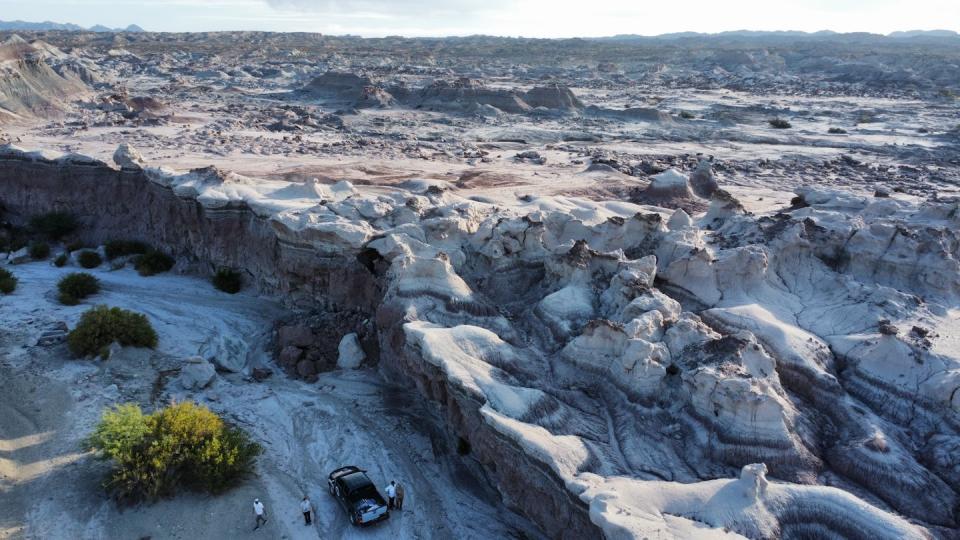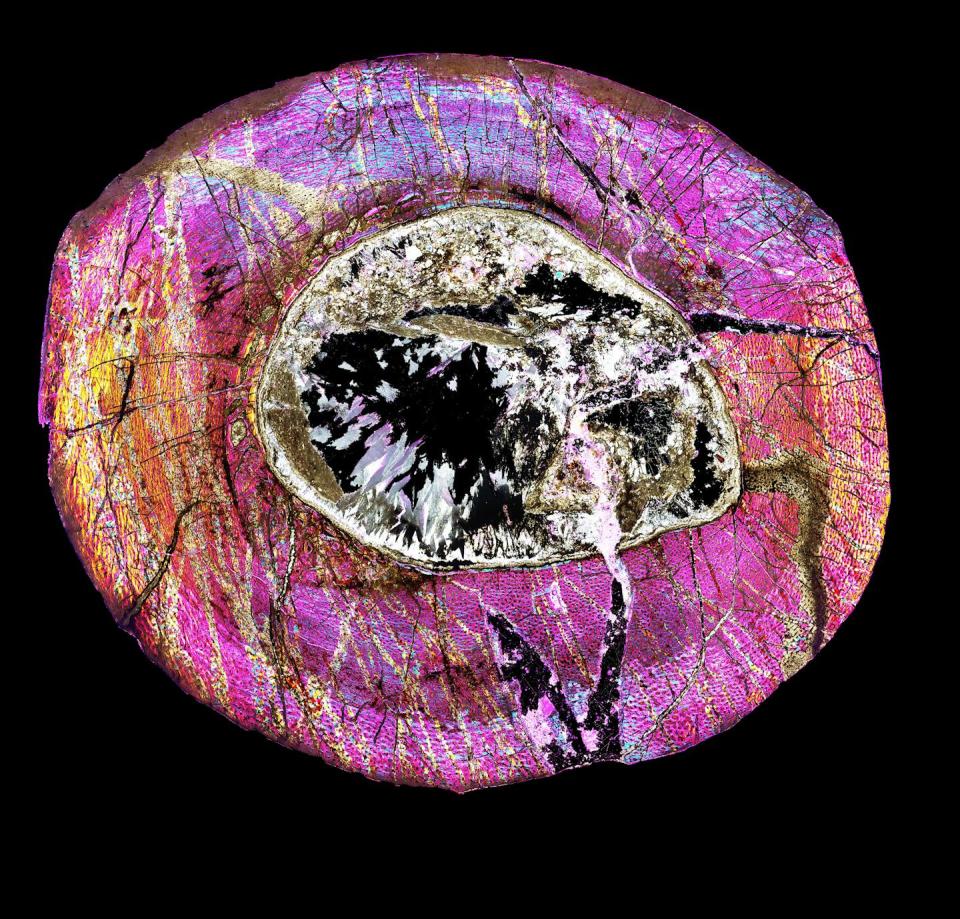It may be hard to imagine, but there was a time when dinosaurs didn’t dominate their world. When they first appeared, they were small, two-legged carnivores, overshadowed by a wide variety of other reptiles.
How did they come to power?
My colleagues and I recently examined the fossilized bones of the oldest known dinosaurs and their non-dinosaur competitors and compared their growth rates. We wanted to find out whether the first dinosaurs were special in the way they grew and whether this could have given them a leg up in their rapidly changing world.
The Great Dying before the dinosaurs
Life on Earth was evolving 250 million years ago. Dinosaurs had not yet evolved. Instead, giant amphibians and sail-backed reptiles called therapsids evolved.
However, scientists estimate that 95% of all living things became extinct in the blink of an eye, approximately 60,000 years in geological time. This event, known as the Permian extinction or the Great Dying, is the largest of the five known mass extinction events on Earth.
Most scientists agree that this near-total extinction was caused by intense volcanic activity in present-day Siberia, which covered millions of square miles with lava. The resulting harmful gases and heat combined to push global temperatures significantly upwards, eventually leading to ocean acidification, loss of oxygen in ocean waters, and a profound ecosystem collapse on both land and ocean.
Only a few lucky survivors made it through.
Survivors and their descendants
In the ecological vacuum created after the mass extinction event, during the Earth’s recovery phase, the ancestors of dinosaurs evolved for the first time; So did the ancestors of today’s frogs, salamanders, lizards, turtles and mammals. It was the dawn of the Triassic Period, which lasted from 252 million years ago to 201 million years ago.
The creatures that survived the Great Dying were generally unremarkable. A group of animals known as Archosauria started out with relatively small and simple body plans. They were flexible eaters and could survive in a wide range of environmental conditions.
Archosaurs eventually split into two tribes; one group included modern crocodiles and their ancient relatives, and the second group included modern birds along with their dinosaur ancestors.
This second group walked on tiptoe and had large leg muscles. They also had extra connections between their back bones and hip bones, allowing them to move efficiently in their new world.
Rather than competing directly with other archosaurs, this group of dinosaur ancestors appears to have benefited from different ecological environments by eating different foods or living in slightly different geographic areas. But initially, dinosaur-like archosaurs were much less diverse than the crocodilian ancestors they lived with.
Gradually the dinosaur lineage continued to evolve. It took tens of millions of years for dinosaurs to become numerous enough for their skeletons to appear in the fossil record.

The oldest known dinosaur fossils come from an area in Argentina now called Ischigualasto State Park. The history of the rocks here dates back approximately 230 million years.
Ischigualasto dinosaurs include all three groups of dinosaurs: meat-eating theropods, ancestors of giant sauropods, and plant-eating ornithischians. They include herrerasaurus, sanjuansaurus, Eodromaeus, Eoraptor, Chromogyzor, panphagia And Pisanosaurus.
These early dinosaurs represent only a small fraction of the animals found at that time. In this ancient world, crocodile-like archosaurs were at their peak. There was a wider range of body shapes, sizes, and lifestyles that easily surpassed the early dinosaurs in the race for diversity.
Towards the end of the Triassic Period, dinosaurs got their lucky break when another mass extinction event caused by volcanism occurred.
The Late Triassic extinction event wiped out 75% of life on Earth. The crocodile-like archosaurs were largely wiped out, but the early dinosaurs remained relatively untouched, paving the way for them to dominate.
Soon dinosaurs went from representing less than 5% of the animals on Earth to more than 90%.
Bones tell the story of growth
My collaborators at the Universidad Nacional de San Juan in Argentina and I wondered whether the rise of dinosaurs was due in part to their rapid growth rate. Thanks to microscopic examination of fossilized bones, we know that later dinosaurs had rapid growth rates, much faster than modern-day reptiles. But we didn’t know if this was true for the first dinosaurs.
We decided to examine the microscopic patterns preserved in the femurs of the five oldest known dinosaur species and compare them with six non-dinosaur reptiles and one of the early relatives of mammals. All of the fossils we examined belonged to the 2 million year old period in the Ischigualasto Formation of Argentina.


Bones are an archive of growth history because even in fossils we can see cavities where blood vessels and cells puncture mineralized tissue. When we look at these features under a microscope, we can see how they are organized. The slower the growth, the more organized the microscopic features become. With faster growth, the microscopic features of the bone appear more irregular.
We discovered that early dinosaurs grew constantly, not stopping until they reached full size. And indeed they had growth rates on par with, and sometimes even faster than, their descendants. But so did many of their non-dinosaur contemporaries. It appears that many of the animals living in the Ischigualasto ecosystem grew rapidly at rates more similar to living mammals and birds than to living reptiles.
Our data allowed us to see subtle differences between closely related animals and those occupying similar ecological environments. But most of all, our data shows that rapid growth is a great survival strategy in the wake of mass destruction.
Scientists still don’t know exactly what made it possible for dinosaurs and their ancient ancestors to survive two of the most extensive extinctions the Earth has ever experienced. We are still studying this important interval, looking at details such as legs and bodies designed for efficient, upright movement, and potential changes in the way early dinosaurs breathed and grew. We think it was probably all of these factors combined with luck that eventually allowed the dinosaurs to rise and rule.
This article is republished from The Conversation, an independent, nonprofit news organization providing facts and authoritative analysis to help you understand our complex world. Written by: Kristi Curry Rogers, Macalester College
Read more:
Kristi Curry Rogers receives funding from the National Science Foundation and the David B. Jones Foundation.